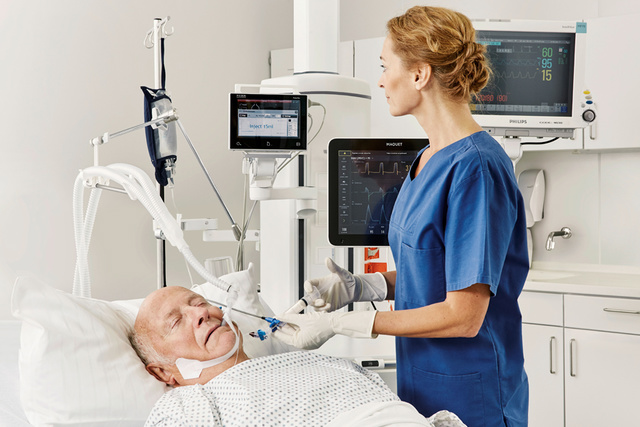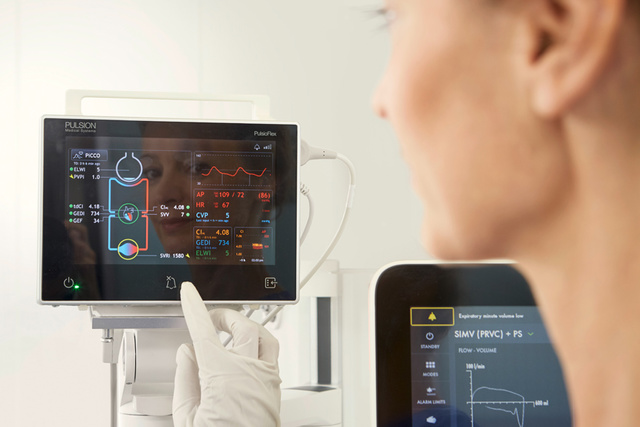Monitoraggio avanzato del paziente
Ottieni il quadro emodinamico completo

Comprendere condizioni emodinamiche complesse
La vita di un paziente gravemente malato dipende dalla giusta decisione sul passaggio terapeutico da intraprendere. I conflitti terapeutici si verificano spesso al posto letto del paziente in terapia intensiva, dove è necessario disporre di informazioni affidabili. Una serie di parametri emodinamici affidabili può aiutare a determinare il miglior trattamento individuale per i pazienti.[1]
Domande sull'emodinamica
Il monitoraggio non riduce di per sé la mortalità o la morbidità del paziente; tuttavia, fornisce informazioni preziose da utilizzare per impostare un piano di trattamento e per applicare quanto prima al paziente una terapia mirata personalizzata. Al fine di garantire un'ampia base di informazioni, è possibile fornire una gamma di parametri e utilizzarli come riferimento per le decisioni terapeutiche.

Personalizzare le strategie terapeutiche
I pazienti in terapia intensiva presentano spesso una condizione emodinamica instabile. Stato volemico del paziente poco chiaro e conflitti terapeutici ostacolano l'implementazione di un'idonea strategia terapeutica: Aumento dei volumi? Uso del vasopressore o supporto inotropico?
Una sufficiente perfusione degli organi e un'ossigenazione ottimale dei tessuti sono di grande importanza. Contemporaneamente, è essenziale evitare il sovraccarico di volume, che può provocare edema polmonare e scambio gassoso interrotto.
Un monitoraggio emodinamico avanzato ha pertanto un ruolo vitale nell'implementazione di strategie terapeutiche salvavita. [2]
Una gestione attenta della gittata cardiaca e dei suoi determinanti può guidare i medici lungo il processo di rianimazione di pazienti critici. L'adattamento di protocolli di monitoraggio emodinamico personalizzati favorisce interventi terapeutici ottimizzati e ha il potenziale per migliorare gli esiti. [3]

Valuta il quadro emodinamico completo dei pazienti
Il monitoraggio della funzione cardiocircolatoria ha grande importanza nei pazienti in terapia intensiva. PiCCO consente la misurazione mininvasiva di parametri emodinamici come la gittata cardiaca e delle sue determinanti: precarico, postcarico e contrattilità. Inoltre, il parametro ELWI consente una valutazione sensibile dell'acqua polmonare extravascolare. Questa serie di parametri emodinamici affidabili può aiutare a determinare il miglior trattamento individuale per pazienti critici.

Identificare in modo continuo il livello di rischio dei pazienti
Un riepilogo dei parametri emodinamici a colpo d'occhio e l'interazione dei valori di soglia consentono una regolazione immediata e mirata del trattamento. Essere costantemente aggiornati su eventuali cambiamenti delle condizioni emodinamiche del paziente aiuta a regolare le strategie terapeutiche personalizzate per ciascun paziente.
Scoprite i nostri prodotti
Trovate i prodotti e le soluzioni giusti per voi